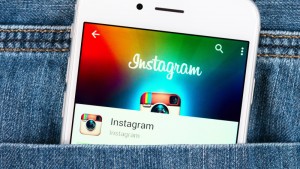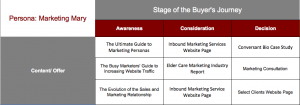In 2005, the future of American business was reflected in the spotless tile behind a toilet bowl. Procter & Gamble had released the Mr. Clean Magic Reach, a sleek tool with a detachable head for scrubbing the darkest recesses of a bathroom. Developed in just 18 months, it represented a strategic move to elevate design throughout P&G, an effort that then CEO A.G. Lafley had spearheaded with an almost religious fervor. “Remember that one of the disciples had to put his hand in the bloody wounds to believe,” he told a reporter at the time, comparing the design skeptics within various divisions of the company to an incredulous apostle. “We have some businesses that are doubting Thomases.” His conviction paid off. P&G’s sales doubled and profits quadrupled between 2000 and 2009, aided by the steady release of new, design-forward products.
P&G wasn’t alone. Throughout the 2000s and 2010s, stalwarts (Coca-Cola, McDonald’s, Ford) and startups (Jawbone, Casper) alike were converting to the church of design. IBM, for instance, spent more than $100 million to open 10 design labs and hire 1,000 new designers. For these companies, design wasn’t just a tool for prettying up a product line; it was an identity, a differentiator, the ultimate competitive advantage. It’s what led Coca-Cola to unveil a soda fountain inspired by a Ferrari, and McDonald’s to sink $2.4 billion into modernizing its restaurants. Fast Company captured the emerging sentiment in a 2004 issue that showcased 20 designers and design advocates: “Design shapes a company’s reason for being; it has become an undeniably transformative force in business and society.”
These days, it’s rare that the CEO of P&G discusses design publicly. Same with the CEO of McDonald’s. Coca-Cola’s CEO, James Quincey, even goes so far as to describe himself as “an engineer at heart. And a rationalist.” In some ways, their silence signals that design has been written into so many pages of the corporate playbook that it no longer warrants much discussion. In others, it represents a capitulation: Design may be an important part of creating a product that sells, but it’s no magical solution for transforming companies and conquering competitors. “It [went] from ‘Wow, design can save the world!’ to ‘Shit, this is hard,’” says Robert Brunner, founder of the San Francisco design firm Ammunition. “‘We’ve made this investment. Now what?’”
Apple envy is partly to blame for corporate America’s love affair with design. Steve Jobs returned to Apple in 1996, formed a mind-meld with industrial-design savant Jony Ive, and revived the company one glorious product at a time, from the iMac to the iPod to the iPhone. By 2011, Apple was pulling in annual profits of nearly $26 billion. The message was clear: Design beautiful things that consumers love, and watch your fortunes soar. “I don’t know how many times people came in the door and said, ‘I want the iPhone version of this,’” says Brunner, whose design agency was responsible for such culture-defining products as Beats by Dre headphones and the Ember smart mug.

But for companies hoping to elevate design as Jobs had, simply tapping the pedigree of designers like Brunner (an Apple vet himself) to develop products was no substitute for undergoing a genuine culture change. Jobs spared no expense to get a phone curve just right or the plastic of a computer case as translucent as possible. That simply wasn’t true at most companies. At the design firm Pentagram, where Brunner was a partner before starting Ammunition in 2007, he worked with Dell on a new personal computer that had to be a particular size to fit inside the factory’s existing pallets. Investing in new pallets wasn’t an option. “When you got down to it, everyone was incentivized around efficiency,” he says. Even companies that incorporated design at a strategic level often underestimated the broader forces that fed Apple’s resurgence, such as the mobile computing revolution. How many people wanted an iPhone for juicing? Not many. That didn’t stop Juicero, a Silicon Valley startup, from raising more than $118 million to build a sleek, if utterly useless, smart juicer that became the laughingstock of the tech press. Design matters, but it can’t invent customers who don’t exist.
If Apple under Jobs was the unattainable ideal for companies, design thinking was its more accessible counterpart. A process popularly associated with the Silicon Valley-born design firm Ideo, design thinking helped businesses do what designers have always done: understand who customers are and what they need. Crucially, it introduced elements of the scientific method—devise solutions, test those solutions—to the unscientific pursuit of lucrative new ideas, and “it spread like wildfire in corporate America because it’s easy,” says Gadi Amit, founder of the San Francisco firm NewDealDesign.
During its ascendance, Ideo was being hired to come up with everything from needle-free vaccines to better Pringles. Clients in the 2000s included Anheuser-Busch, Gap, HBO, Kodak, Marriott, Pepsi, PNC, the Mayo Clinic, and, yes, P&G—Ideo helped the company come up with the Mr. Clean Magic Reach. The fabled image of sneaker-clad creatives sticking Post-it Notes all over the wall is a result of Ideo’s imprint on a corporate world that spent decades in a shirt and tie, scrutinizing spreadsheets.
But for all of design thinking’s appeal, it didn’t always produce exhilarating results. “People were like, ‘We did the process, why doesn’t our business transform?’” says Cliff Kuang, a UX designer and coauthor of User Friendly (and a former Fast Company editor). He points to PepsiCo, which in 2012 hired its first chief design officer and opened an in-house design studio. The investment has not yielded a string of blockbusters (and certainly no iPhone for soda). One widely promoted product, Drinkfinity, attempted to respond to diminishing soft-drink sales with K-Cup-style pods and a reusable water bottle. The design process was meticulous, with extensive prototyping and testing. But Drinkfinity had a short shelf life, discontinued within two years of its 2018 release.
“Design is rarely the thing that determines whether something succeeds in the market,” Kuang says. Take Amazon’s Kindle e-reader. “Jeff Bezos henpecked the original Kindle design to death. Because he didn’t believe in capacitive touch, he put a keyboard on it, and all this other stuff,” Kuang says. “Then the designer of the original Kindle walked and gave [the model] to Barnes & Noble.” Barnes & Noble released a product with a superior physical design, the Nook. But design was no match for distribution. According to the most recent data, Amazon owns approximately 80% of the e-book market share.
There’s no question that design has become incredibly powerful over the past 20 years. The rise of mobile computing has forced companies to create effortless user experiences—or risk getting left behind. When you hail an Uber or order toilet paper in a single click, you are reaping the benefits of carefully considered design. A 2018 McKinsey study found that companies with the strongest commitment to design and the best execution of design principles had revenue that was 32 percentage points higher—and shareholder returns that were 56 percentage points higher—than other companies. And designers are still in hot demand. “I meet startup founders every week who are looking for ways of weaving design into their strategy from day one,” says Steve Vassallo, general partner at the venture capital firm Foundation Capital and a former Ideo design engineer. Tony Fadell, inventor of the iPod and Nest thermostat, puts it more bluntly: “If you don’t have it, then you look like you’re out of the ’80s or the ’70s. You just don’t seem modern.”
Yet anyone surveying today’s consumer-product landscape—littered with single-use plastic and phones built for obsolescence—would be hard-pressed to argue that design has been an “undeniably transformative force” in any larger sense. It has helped some companies get richer, sure, but often at great environmental cost. And with companies at least paying lip service these days to higher aspirations, such as sustainability and accessibility, this presents a conflict. Jon Iwata, a former chief brand officer at IBM who runs the Yale Program on Stakeholder Innovation and Management at Yale School of Management, has spoken with roughly 100 CEOs to learn how design figures into a more inclusive view of capitalism. He found a yearning within companies for new ways to frame problems and create value for diverse audiences. In response, he’s creating a framework he calls stakeholder-centered design: For design to make a truly significant impact, it has to meet the needs of a vast web of stakeholders, including customers, employees, suppliers, communities, the environment, and, of course, shareholders. He’s not the only one thinking in these terms. For the past several years, a smattering of design firms (including Ideo) and some companies have been building products and services that consider more than just the end user’s experience.
In 2018, for example, Nike set out to design the world’s lowest carbon footprint shoe—and not just a concept shoe. It had to be something the company could produce at scale and at a profit. Nike reconfigured its development team at the outset to include experts in finance, procurement, and manufacturing in addition to the usual gaggle of designers and marketers. The result, the Space Hippie shoe line, released in 2020, is an everything-but-the-kitchen-sink shoe, with yarn made from old plastic bottles, T-shirts, and other scraps; foam made from ground-up Nike shoes; and a shipping-friendly shoebox composed of 90% recycled material. The first run sold out, and Nike says findings from Space Hippie have influenced the development of other shoes representing millions more units.
It’s too early to tell if Nike will take the experiment further and what long-term impact it might have. And without new economic incentives to support stakeholder-centered design, initiatives like this face long odds at the average American corporation. But ethical, sustainable products are increasingly popular among consumers, especially Gen Z. Companies may have no choice but to adopt a more expansive view of design. Even the doubting Thomases.
Fast Company , Read Full Story
(18)






